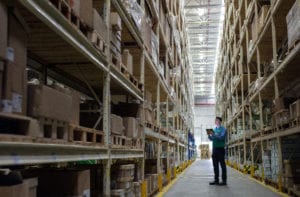The mining, minerals, and metals (MMM) industry is an energy-intensive business and one that is finding itself increasingly challenged to earn the social license to operate, as many people consider resource extraction to be damaging to natural environments and exacerbating climate change.
However, the industry is instrumental in helping us realize a lower carbon future, as the World Bank’s report “The Growing Role of Minerals and Metals for a Low Carbon Future” concludes. Thankfully, many mining, minerals, and metals companies play a leading role in driving increased sustainability through every part of their business.

Recently, Schneider Electric partnered with MiningMagazine.com to host an innovation talk entitled, Five Evolutionary Technologies towards Sustainable Mining, Minerals & Metals. The presentation addresses five fundamental technologies’ roles in creating more efficient and sustainable mining, minerals, and metals operations. Below, fundamental questions examined during the talk are answered in brief:
1. Should organizations audit and refine corporate sustainability goals to align with on-site climate action plans?
A lack of cohesive planning and thorough coordination at the corporate level can result in a fragmented approach to implementing sustainability initiatives. The result is missing easily attainable opportunities to increase efficiency and leverage the repeatable value of in-built economies of scale. Building a community of practice is one of the best ways to implement a repeatable methodology that can fast-track carbon reduction and sustainability projects across a global footprint. By centralizing governance to accelerate decision-making while simultaneously localizing implementation plans to streamline site performance, MMM companies can increase their action plan success rates. During the planning phase, it’s also essential to embrace the entire portfolio of CapEx/OpEx options available when developing your business case to protect cash flow and lower risk.
2. Why should businesses look at financial enablement strategies to help them achieve sustainability goals?
Frequently, MMM companies looking to move beyond incremental sustainability improvements discover that financial and risk components are the walls that limit quantum change. It’s always a good idea to examine strategies that offer to remove financial burdens and reduce risk. Choosing financing that eliminates the capital burden to improvement projects while providing project execution expertise and risk mitigation via performance assurances is a good way to get game-changing projects across the finish line. Financial enablement arrangements can take various forms:
- Energy as a Service – upgrade equipment without an ownership commitment by using third-party financiers to provide upfront capital and assume asset liability.
- Reduce energy consumption using traditional CapEx or without capital investment through an Energy Efficiency as a Service model (EEaaS).
- Shared savings agreement – obtaining fee recovery through validated savings.
- Performance contracting – reduce risk and remove capital burden by reinvesting guaranteed returns.
- Power purchase agreement – use third-party financing to mitigate price risk and protect cash flow while avoiding infrastructure ownership disadvantages.
3. What role do renewables and microgrids play in helping resource companies reach or beat their decarbonization targets?
Together, these technologies are the linchpin to enabling clean, reliable, low-cost energy and a more stable and efficient regional energy grid. By including trusted partners with financing, plus technical and implementation expertise for projects, MMM professionals can more easily remove capital barriers and project complexity issues that may be limiting their ability to attain sustainability goals. Several components comprise cutting-edge systems:
- Modern renewable generation – wind and solar are widely available, cost-effective, and generally safer to operate than traditional sources.
- Energy storage – comprising batteries and/or thermal and mechanical methods, storage abilities support a clean energy transition by firming up intermittent power sources and increasing grid flexibility to drive positive outcomes.
- Advanced control technologies – such as cloud computing and IoT, help optimize, autonomously schedule and control energy production and consumption.
- Microgrids – allow self-contained, on-site energy generation from greener sources that can improve a network’s sustainability, reliability, and resilience.
4. What role do advanced software and analytics play in helping drive better sustainability outcomes?
Organizations need accurate, timely data to make the right choices more quickly. Three key digital enablers enable better decision making:
- Transparency of consumption – because energy visibility is the starting point for decarbonization, obtaining insights from across the corporate value chain is vital to measuring what you use and controlling what you measure.
- Analytics and artificial intelligence – has the power to help automate the conversion of data-driven insights into real-time decision making.
- Ecosystem collaboration – leveraging the skills and know-how of end-users, technology partners, and integrators within a partnership is often the easiest, fastest, and most profitable path to success.
5. Why is ensuring an integrated relationship between power and process systems critical to improving operational efficiency and sustainability?
The quest to forge a more sustainable future has simultaneously resulted in world disruption by an energy transition and digital transformation. As a result, power and process are becoming impossible to decouple. Using on-site energy more efficiently improves mining processes’ productivity, reliability, and safety. Because integration involves bringing energy management capabilities and existing automation tools together to boost the efficiency of industrial infrastructure, an open digital model that works with many different vendors is vital as it helps organizations achieve their goals and move more quickly.
For a deeper dive into how MMM operations can be made more efficient, cost-effective and sustainable, watch the Five Evolutionary Technologies towards Sustainable Mining, Minerals & Metals Innovation Talk today.



